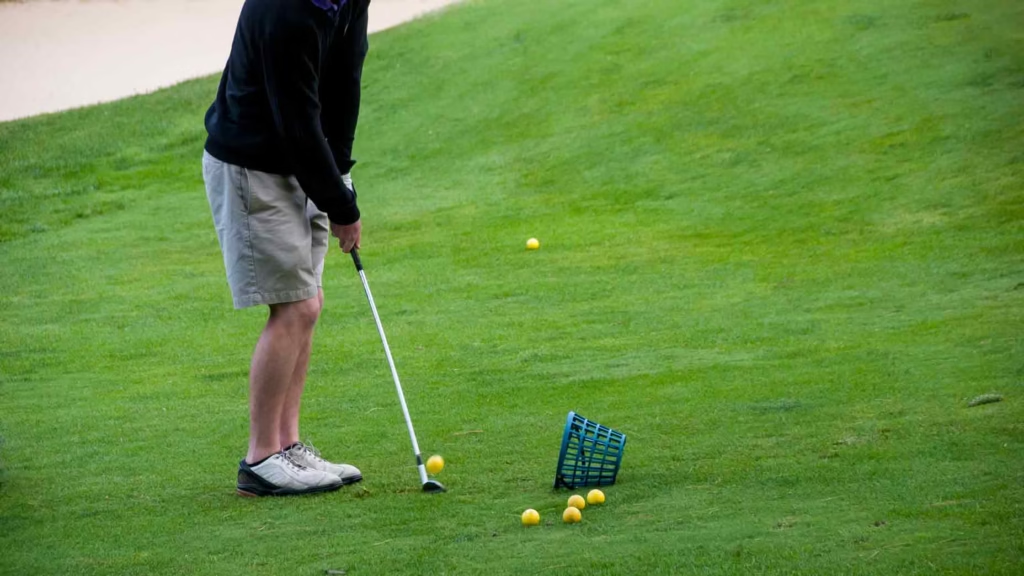One of the fastest ways to drop your scores is by improving your chipping. The goal is to consistently get the ball close to the hole, setting up easy tap-ins. While solid technique is essential, real improvement comes from developing a system to control distance.
Here’s a five-step approach to sharpen your chipping and lower your scores.
1. Chipping is like putting
Chipping uses a stroke motion similar to putting, with just a few setup adjustments. Because the motion is small and compact — never going above hip height — it’s low maintenance and highly effective. Even if contact isn’t perfect, a sound stroke often produces a decent result.
This putting-like motion also reduces moving parts. There’s minimal weight shift, which simplifies consistency and control.
2. Hit the ball, then the turf
Your top priority is clean contact — striking the ball before the turf. This produces consistent flight-to-roll ratios and better distance control.
Drill: Place an alignment stick 3–4 inches behind the ball. Practice avoiding the stick during your stroke. This discourages scooping and promotes proper downward contact.
3. Check your setup
Chipping is all about simplicity, and that starts with a compact setup:
- Grip: Choke down on the club.
- Stance: Narrow and quiet.
- Ball Position: Centered or slightly back.
- Shaft & Upper Body: Lean both slightly forward toward the target, keeping them there throughout the stroke. This helps reduce loft, keeps your sternum forward, and promotes ball-first contact.
4. Practice with purpose
The fastest way to lower your scores through chipping is to practice distance control. Focus on landing the ball near your target and observe the result. If the ball rolls too far, adjust with a smaller backstroke or a more lofted club.
Learn by reacting to feedback. Over time, you’ll gain a better feel, and your chips will consistently end up close enough for a tap-in — or even the occasional chip-in.
5. Calibrate and Keep Notes
If you’ve played golf most of your life or practice often, you might rely on feel. But for most players, calibration is key.
Track how far each club and stroke size sends the ball (carry + roll). Create a chart with:
- Total distance
- Preferred club
- Stroke size
Once you define your system, write it down. Use your notes during rounds to make confident, informed decisions.
I’ve created a course to help you do just that — a “cheat code” for lowering your scores by building your own personalized short game system. Check it out here.
Discover more from 6up.net
Subscribe to get the latest posts sent to your email.


